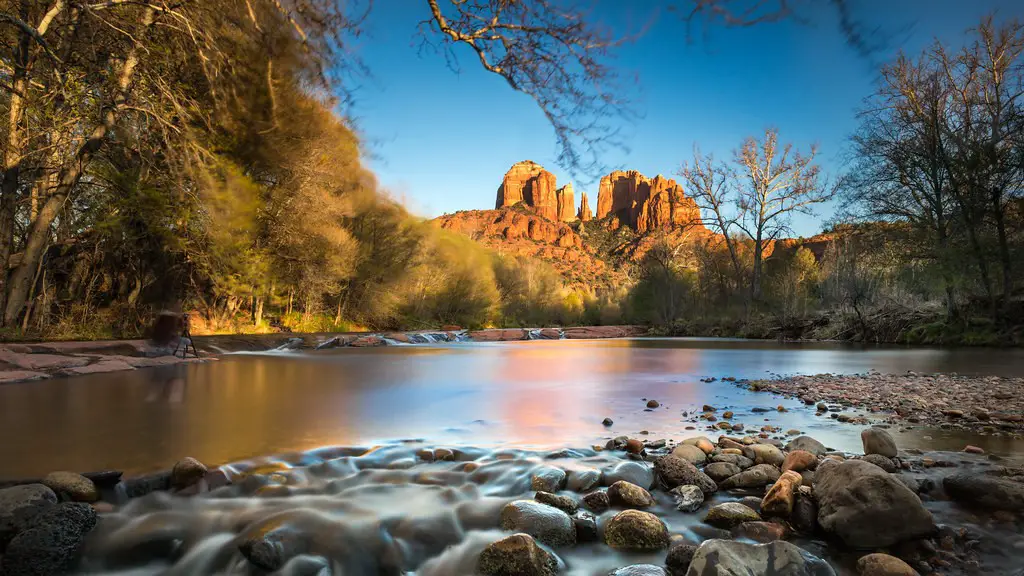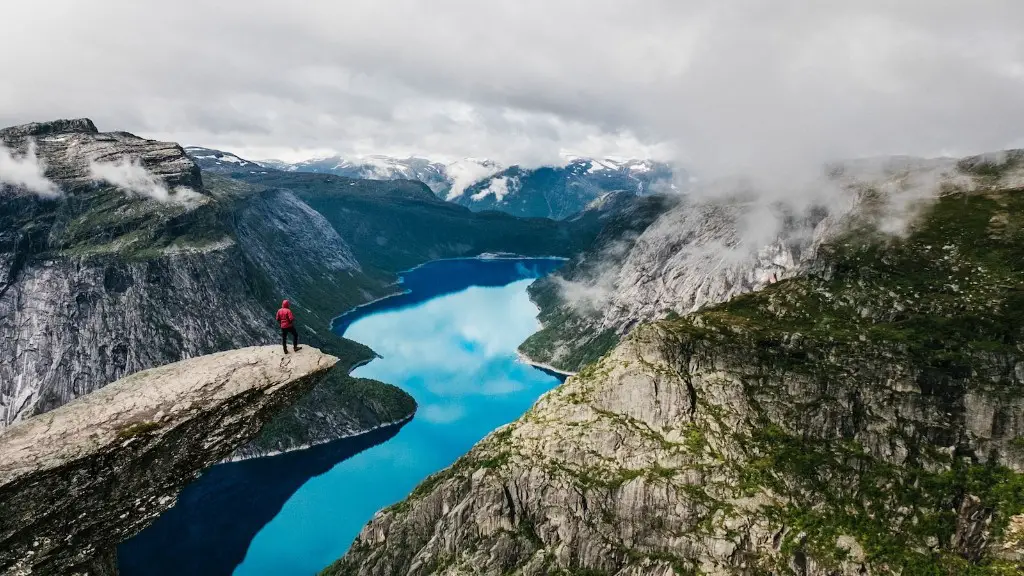Where is the Mississippi River Source?
Most Americans are aware of the importance and impressive length of the Mississippi River. It is the second longest river in the United States, running roughly 2,340 miles from its source near Lake Itasca through parts of Minnesota, Wisconsin, Iowa, Illinois, Missouri, Kentucky, Tennessee, Arkansas, Mississippi, and Louisiana before draining into the Gulf of Mexico. But, many are unsure as to where the Mississippi River source can be found. The origin of the river can be traced to a small lake located in northern Minnesota’s Clearwater County along the edge of the state’s north woods.
The Mississippi begins at Lake Itasca, a 215,000-acre sub-alpine lake located 1,475 feet above sea level. Lake Itasca is fed by more than 20 streams and springs including Deer Creek which is reported by some to be the only official start of the Mississippi River. However, other experts cite a small spring located on the northern end of Lake Itasca as the true source of the river.
The surrounding area of the Mississippi’s source, the “headwaters region”, is made up of heavily-wooded hills dotted with lakes, streams, and wetlands. Spanning some 17,000 square miles, the region was first inhabited by Native Americans as long as 6,000 years ago. And though Lake Itasca and the headwaters region have experienced developing and deforesting, much of the landscape remains relatively unchanged.
Minnesota’s Department of Natural Resources estimates that over one million acres of the headwaters region are presently managed as state parks and wild areas. The majority are preserved in their natural state and open to visitors who seek to explore the area and its wildlife. Though there are no permanent settlements in the region, logging, mining, and quality of life concerns are a popular topic of conversation among the native Minnesotans who call the area home.
The expansiveness and undisturbed condition of the Mississippi River’s source is a living example of how wild segments of the country’s largest and most iconic rivers can be preserved. The pristine character of the area has also attracted researchers and researchers who study the impact of climate change, the many species of plants and animals, and other environmental aspects of the area.
At Lake Itasca, many visitors put their own stamp on the Mississippi River’s source. Some throw a stone or stick in the lake’s shallow waters in imitation of early explorers. Others take a dip or cast a line in a symbolic gesture to commemorate the river whose grandeur they have followed until they come to its origin.
Importance of Mississippi River Source
The Mississippi River source is integral in the water cycle and it has been essential in the lives of thousands of people living in the American Midwest. On a large scale, it moderates the region’s temperature and humidity, creating a warm continental climate. It also supplies an abundance of fresh, clean water to many local areas, which is a vital resource for agriculture, power production and other activities.
The Mississippi River source has also been crucial in providing a large number of wild species with good sources of food and shelter. And from a recreational point of view, it provides outdoor enthusiasts with fishing, swimming, hiking and canoeing opportunities. Moreover, the river has been and continues to be a key component of the region’s economy, providing a large number of jobs to the population since it has been used for transportation for centuries.
Since the Mississippi River and its source are so important to the local environment and economy, it is essential to ensure its preservation. The state and federal governments have taken steps to protect the watershed, ensuring that water quality and the environment are managed and maintained. For example, The Environmental Protection Agency has developed a strategy to improve water quality in the river, while the United States Army Corps of Engineers has undertaken a variety of projects to help protect and preserve the river system.
In addition, the water sources of the Mississippi River have been promoted by organizations like the National Park Service, which has placed more emphasis on preserving the areas and promoting eco-tourism. The National Geographic Society, has also worked with the Mississippi’s source to produce educational materials regarding the river and its ecological importance.
Pollution and Conservation of Mississippi River Source
Despite the efforts of the state and federal governments, the Mississippi River source is still highly susceptible to pollution and other negative factors. Agriculture and industrial activities have played a role in water quality decline, while invasive species have caused significant damage to the ecological balance in the region.
Non-profit organizations, like the Mississippi River Source Project, have made great strides in protecting the region and its natural resources. Their primary focus has been to improve water quality and protect the species, habitats, and valuable watersheds of the Mississippi River source. They have employed several techniques, such as creating buffer zones, controlling invasive species, and restoring streams and rivers.
Other individuals and organizations, such as The Nature Conservancy, have taken action to restore and protect the wildlife surrounding the Mississippi’s source. They focus on reconnecting communities to nature and restoring natural habitats around the river. These initiatives aim to improve the health of the river and the communities that rely on it.
In addition, the local state and federal governments have enacted policies to mitigate and prevent damage to the Mississippi’s source. The federal Clean Water Act, for example, seeks to protect the rivers and streams of the region by regulating the amount of pollutants that can be discharged into the water. It also puts limits on activities like logging, mining, and development.
Management Issues Related to Mississippi River Source
The management of the Mississippi River source remains a highly contested issue. Local communities and environmentalists have different interpretations of the river’s value and the importance of preserving it. For example, some argue that ecological restoration should take precedence, while others suggest that economic development is a more viable solution.
Additionally, the management of the Mississippi River source has been complicated by changing climate conditions and rising sea levels. This increase in water levels has pushed the river towards neighboring states, creating a transboundary dispute between Minnesota and Wisconsin. The two states have disagreed on how to manage the river, with Wisconsin arguing for development and Minnesota fighting for preservation.
As a result of this conflict, the two states have sought the advice of the United Nations to help resolve the issues. Together, they have created an international framework to help address their shared concerns and develop a plan to address their respective needs and concerns moving forward.
Population around Mississippi River Source
The population of the headwaters region of the Mississippi River is largely rural. Neighboring towns near Lake Itasca have experienced a modest influx of tourists in recent years, though the area remains largely untouched by urban development. This has allowed local wildlife to continue existing in healthy numbers.
The population of the Mississippi River source is also made up of people who have lived in the area for generations. Local communities are highly diverse, with French, German and Native American influences. They rely on the river for their livelihoods and the preservation of their culture.
The state government of Minnesota recognizes the importance of preserving the Mississippi’s source and the culture of the people in and around it. In response, they have implemented a number of initiatives to support the locals. These include tax incentives for local businesses, education programs for school-aged children and special grants for conservation initiatives.
Local communities are also working together to ensure the long-term future of the region. Every year, the communities in the Mississippi’s source region work together to organize the “Headwaters Conference”. This forum seeks to bring together the people of the area and foster collaboration between the different stakeholders.
Economic and Social Impacts of Mississippi River Source
The economic and social impacts of the Mississippi River source are seen throughout the United States and beyond. On a national level, it serves as an important artery for transportation, commerce, and communication. Internationally, the Mississippi has been used to trade goods and transport people, aiding in the growth and development of many economies.
On a local level, the river has been an integral part of the livelihoods of many Minnesotans. The presence of the river has facilitated the growth of the region’s agriculture and tourism industries, providing plentiful jobs and economic opportunities.
The Mississippi River source is also of social importance, providing people with a unique window into the past. It allows people to observe and reflect upon the region’s history and allows them to experience a sense of connection to their ancestors. The preservation of the source and its surrounding areas is also critical in protecting and promoting local cultures, which are closely linked to the river.
Lastly, the Mississippi River source serves as an example of how large rivers can be preserved and protected from pollution and exploitation. It demonstrates that with enough resources, commitment and knowledge, rivers can serve as rich sources of both enjoyment and opportunity.





